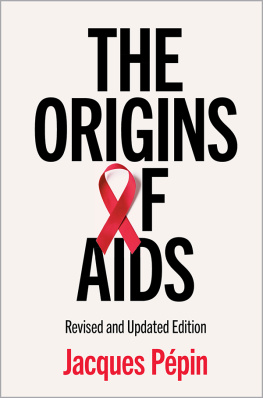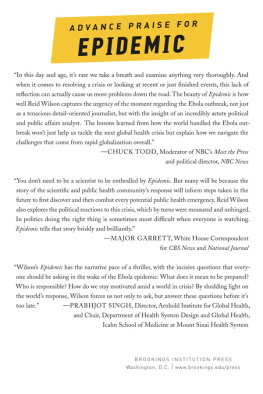HOW THE
WEST SPARKED THE
AIDS EPIDEMIC
TINDERBOX
AND HOW THE
WORLD CAN FINALLY
OVERCOME IT
CRAIG TIMBERGand
DANIEL HALPERIN, PH.D.
The Penguin Press
New York
2012
THE PENGUIN PRESS
Published by the Penguin Group
Penguin Group (USA) Inc., 375 Hudson Street, New York, New York 10014, U.S.A. Penguin Group (Canada), 90 Eglinton Avenue East, Suite 700, Toronto, Ontario, Canada M4P 2Y3 (a division of Pearson Penguin Canada Inc.) Penguin Books Ltd, 80 Strand, London WC2R 0RL, England Penguin Ireland, 25 St. Stephens Green, Dublin 2, Ireland (a division of Penguin Books Ltd) Penguin Books Australia Ltd, 250 Camberwell Road, Camberwell, Victoria 3124, Australia (a division of Pearson Australia Group Pty Ltd) Penguin Books India Pvt Ltd, 11 Community Centre, Panchsheel Park, New Delhi110 017, India Penguin Group (NZ), 67 Apollo Drive, Rosedale, Auckland 0632, New Zealand (a division of Pearson New Zealand Ltd) Penguin Books (South Africa) (Pty) Ltd, 24 Sturdee Avenue, Rosebank, Johannesburg 2196, South Africa
Penguin Books Ltd, Registered Offices: 80 Strand, London WC2R 0RL, England
First published in 2012 by The Penguin Press, a member of Penguin Group (USA) Inc.
Copyright Craig Timberg and Daniel Halperin, 2012
All rights reserved
Illustration credits appear on page 404.
LIBRARY OF CONGRESS CATALOGING IN PUBLICATION DATA
Timberg, Craig.
Tinderbox : how the West sparked the AIDS epidemic and how the world can finally overcome it / Craig Timberg and Daniel Halperin.
p. cm.
Includes bibliographical references and index.
ISBN: 978-1-101-56061-7
I. Halperin, Daniel. II. Title.
[DNLM: 1. Acquired Immunodeficiency SyndromeepidemiologyAfrica. 2. Acquired Immunodeficiency SyndromeetiologyAfrica. 3. ColonialismAfrica. 4. HIV InfectionsepidemiologyAfrica. 5. HIV InfectionsetiologyAfrica. 6. Western WorldAfrica. WC 503.41]
614.5993920096dc23 2011040206
Printed in the United States of America
1 3 5 7 9 10 8 6 4 2
DESIGNED BY MICHELLE MCMILLIAN
MAPS BY JEFFREY L. WARD
No part of this book may be reproduced, scanned, or distributed in any printed or electronic form without permission. Please do not participate in or encourage piracy of copyrighted materials in violation of the authors rights. Purchase only authorized editions.
ALWAYS LEARNING
PEARSON
To all who have suffered from HIV,
and to all who might yet be spared.
AUTHORS NOTE
This book is the product of two authors: Craig Timberg reported and wrote most of the text; Daniel Halperin developed the ideas that form its scientific backbone and also worked extensively on the manuscript. Both of us occasionally appear as observers as well as characters in the narrative. For ease of readability, Timberg speaks in the first person, as I. Halperin is referred to in the third person, as Halperin. We are a bit of an odd couple. One of us is a journalist, the other a scientist. And while weve faced our share of challenges in crafting a book we believe speaks to both a general audience and a scientific one, we hope you will end up agreeing that in tackling this urgent and frequently misunderstood topic, we are more than the sum of our parts. What has consistently bonded us together is a fascination with human experience, a refusal to accept easy answers, and a determination to contribute, however modestly, in the quest to defeat the AIDS epidemic.
tinderbox:
noun/ tind r, bks/
r, bks/
A thing that is readily ignited
PROLOGUE
T here once was a place deep in the forest where few people dared go. Trees a dozen stories high loomed overhead, blocking out all but the faintest dapples of sunlight. Below a riot of wildlifeparrots, antelopes, chimpanzeesranged freely. The few humans to travel routinely through this remote corner of creation were Baka Pygmies, who were so small and unaccustomed to the trappings of civilizations that other people regarded them as little more than animals themselves. Silently, invisibly, a virus with no name lurked in the blood, lymph nodes, and semen of the chimps, waiting for the chance to fulfill its fate as one of the planets most terrible killers. For centuries, perhaps millennia, it never did.
This uneasy peace among human, chimp, and virus broke with the pounding of exhausted feet against the ground. Those who came crashing through the jungle did not do so of their own accord. They were porters, human pack animals pressed into service by a strange new race of pale-skinned men carrying metal sticks that exploded with fire. Any Africans who resisted lost their hands, or their lives, or their wives and children to prison camps. Those who complied fared little better, as they were force-marched through unfamiliar land fifteen miles or more a day, carrying the white mans gear, the white mans gray gobs of rubber, the white mans creamy tusks of ivory. Exhausted and in a place none of them wanted to be, the porters scavenged for something beyond the gruel ladled out by their masters. Among the few sources of meat were jungle animals, including, when they could be trapped, those same chimpanzees in whose bodies the virus hid.
We are unlikely ever to know all of the details of the birth of the AIDS epidemic. But a series of recent genetic discoveries point strongly toward a moment such as this, when a connection was made from chimp to human that changed the course of history. We now know where the epidemic began: a small patch of remote southeastern Cameroon. We know when: within a couple decades on either side of 1900. We have a good idea of how: somebody caught an infected chimpanzee for food, allowing the virus to pass from the chimps blood into the hunters body, probably through a cut during the butchering. As to the why, here is where the story gets even more fascinating, and terrible. We typically think of diseases in terms of how they threaten us personally. But they have their own stories. Diseases are born. They grow. They falter, and sometimes they die. In every case these changes happen for reasons. For decades nobody knew the reasons behind the birth of the AIDS epidemic, though theories tended to focus on growing transport links, shifting social values, and rising sexual experimentation in a world where traditions were giving way. But the new genetic discoveries have lent new precision to what were once only educated guesses.
It is now clear that the AIDS epidemics birth and crucial early growth happened amid the massive intrusion of new people and technology into a land where ancient ways still prevailed. European powers engaged in a feverish race for wealth and glory blazed routes up muddy rivers and into dense forests traveled only sporadically by humans before. The most disruptive of All that began when the West forced its will on an unfamiliar land, causing the essential ingredients of the AIDS epidemic to combine. It was here, by accident but with motives by no means pure, that we built a tinderbox and tossed in a spark.
The epidemic spent the next half century following the disastrous contours of modern African history, as Westerners remained crucial, if unwitting, agents in spreading HIV around the continent and eventually the world. The virus exploited the rise of colonial cities, the growth of prostitution, and the creation of fast transport routes that linked far-flung communities together into robust new pathways for sexual transmission of disease. And when Africans finally regained their independence in the 1960s, the chaos of the years that immediately followed, with their sweltering new slums and rampant instability, only helped HIV toward its grim destiny.











 r, bks/
r, bks/